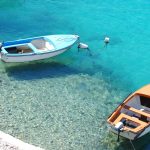
July 2, 2020 – The Slovenian government has put Croatia on the “yellow” list of epidemiologically less secure countries due to the increase in the daily number of coronavirus infections, said government spokesman Jelko Kacin in Ljubljana.
UPDATE JULY 4:
Croatian citizens who want to go to Slovenia from today (July 4) must show a negative test for coronavirus not older than 36 hours, made in the European Union, to a Slovenian border police officer. If they do not have it, they will be handed a decision on 14-day self-isolation at the border.
If they have nowhere to self-isolate in Slovenia, they will not be allowed to enter that country, Slovenian Interior Minister Aleš Hojs explained yesterday.
If they pass through Slovenia in transit without stopping, they must pass it within 12 hours. These new measures are valid for our citizens after Slovenia put Croatia on the yellow list, which means that it is not an epidemiologically safe country. Apart from Croatia, the Czech Republic and France have been on the Slovenian yellow list since midnight.
This means that both Czech and French tourists who go to Croatia on holiday in Slovenia will have to pass without stopping, and at the Slovenian border attach proof that they are going to Croatia. Hojs said that all border crossings to Croatia remain open, but all those who are aware that after entering Slovenia will have to self-isolate, will be able to enter the country only through four border crossings with Croatia – Gruškovje, Obrežje, Metlika and the airport in Ljubljana.
This new restrictive measure, Slovenian government spokesman Jelko Kacin admitted at a press conference yesterday, was introduced by Slovenia because of its citizens who lied to border police officers when they entered Slovenia that they were in Croatia, but were actually returning from Serbia or Bosnia and Herzegovina. They did this to avoid the 14-day quarantine they are required to go to on their return from those countries. Kacin admitted that the number of people infected with coronavirus in Slovenia has increased precisely because of such people. In an attempt to prevent this, the Slovenian authorities are introducing restrictive measures that will make Croatia one of the biggest victims.
As of July 4, all foreign citizens entering Slovenia, who were on vacation in Croatia, will have to give Slovenian border police officers proof that they have been in Croatia. Invoices for paid sojourn tax, hotel invoice or registration via the Enter Croatia application will be recognized. In order to avoid quarantine in their own country, all Slovenes returning from vacation at the Croatian Border Police will have to prove that they were in our country.
Those who own real estate in Croatia will be able to avoid going into self-isolation by providing proof of ownership, and all others by paying bills in Croatian restaurants and bars in Croatia or by confirming the paid sojourn tax. For example, those who transported someone to the Zagreb Airport will have to enclose an invoice for paid parking at the airport or an invoice from the bar where they had a drink.
Checks on proof of residence in Croatia will enormously increase congestion on the Croatian-Slovenian border, admits the Slovenian Minister of the Interior. But he succinctly explained that it is not a problem for all those waiting for quarantine to wait an hour longer at the border.
The new Slovenian regime at the border will also create great pressure on Croatian border police officers and create large crowds at the entrance to Croatia from the direction of Slovenia. Especially since the decision is starting to apply for the weekend. Regardless of the new Slovenian measures on the Croatian side, new measures were introduced at four border crossings – Bregana, Macelj, Rupe and Plovanija in order to reduce the time of crossing the border and enable better flow.
Special lanes have been established for foreign tourists who have applied to come to Croatia via the Enter Croatia application. In front of the border crossings, there are special traffic signs and lines have been drawn that direct these tourists to the part of the border crossing intended for them.
——————–
Index.hr reports that as he explained at the press conference, the decision was made by the government on Thursday, and the measures will take effect on Saturday at midnight.
So far, Croatia has been on Slovenia’s “green” list of epidemiologically safe countries.
Apart from Croatia, the Czech Republic and France have now been relegated to a lower category of safe, while Belgium and the Netherlands have been included in the higher “green” list of safe countries.
The decision for Slovenes staying in Croatia means that when they return home, they will be able to expect the border police to ask them exactly where they stayed, which they will be able to prove, for example, with a hotel bill, but they will not be quarantined.
Those returning from Croatia will have to substantiate their route at the border with evidence or give confirmation that they have a vessel or real estate in Croatia “because there have been too many attempts to deceive in that sense,” Kacin said.
Apart from the increase in the number of infections in Croatia, as Kacin suggested, the measure was also adopted because there have been many cases recently when Slovenian citizens and those with permanent residence in Slovenia coming through Croatia or Hungary stated that they were in those countries, even though they were in Serbia or Bosnia and Herzegovina, which are on the “red” list of epidemiologically safe countries.
Kacin again called on Slovenes living abroad to avoid crowds and respect epidemiologically prescribed measures, and especially to avoid nightclubs and mass parties because they are a potential source of infection.
When asked what putting Croatia on the “yellow” list means for Croatian citizens, Kacin said that they would be able to come to Slovenia freely if they have real estate or booked tourist accommodation.
A few days ago, Kacin explained what it means to be on the “yellow list”. “If the country is placed on the yellow list, then a Slovenian citizen or foreigner with permanent or temporary residence in Slovenia, if they come from the EU or the Schengen area, enters Slovenia without quarantine. For other persons, a 14-day quarantine is mandatory,” he said, but also stated that there are 15 exceptions to that decision.
Details of the decision to move Croatia from the “green” list of safe countries to the “yellow” will be announced on Friday after the session of the Slovenian government, Health Minister Tomaz Gantar told Slovenian television on Thursday evening.
According to Gantar, a new government decision and the tightening of epidemiological measures are needed as part of the deteriorating situation in the region, but also in Slovenia, where more and more new local infections are being transmitted after the virus was imported, especially from “red list” countries such as Serbia, North Macedonia, BiH and Kosovo.
From those countries, everyone who enters Slovenia must be in a 14-day quarantine. Quarantine decisions will be issued at the border with Croatia.
For those Slovenes who continue to go to Croatia as tourists, “it is not planned for now” that they would need a binding 14-day quarantine, and for now, this only applies to those who were in the countries on the “red” list where the epidemiological situation is critical, or very bad, Gantar explained.
For the latest travel info, bookmark our main travel info article, which is updated daily.
Read the Croatian Travel Update in your language – now available in 24 languages
Join the Total Croatia Travel INFO Viber community.











